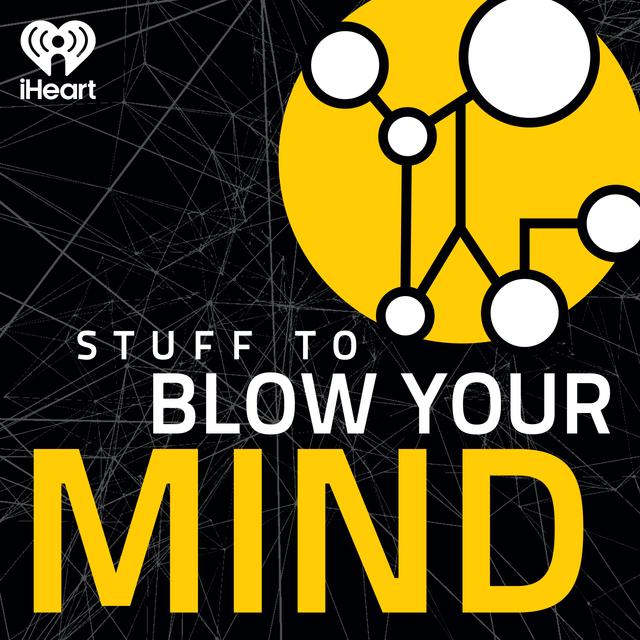Welcome to Stuff to Blow Your Mind, a production of iHeartRadio.
Hi, my name is Robert Lamb and this is The Monster Fact, a short form series from Stuff to Blow Your Mind, focusing on mythical creatures, ideas and monsters in time. This week, I finally began assembling the plastic O Mu model kit that I purchased last year at Japan's Ghibli Park.
I admit that the sheer number of legs in the kit scared me away from the task for almost exactly a year, but they are now glued in place, and with this fantastic creature on my mind, I thought, what better time than now to discuss its biology on the
Monster Fact. If you've ever watched Yomiazaki's nineteen eighty four masterpiece NAUSICAA of the Valley of the Wind, and perhaps even listen to our Weird House Cinema episode about the film, then you already know a great deal about these fantastic creatures. The olmun, whose name suggests the Japanese for king of insects, are indeed gigantic, multi legged arthropods, protected by a thick
exoskeleton and prone to destructive stampedes. Yet they also have a gentle side, and are able to extend glowing tendrils that can heal wounds and enable telepathic communication with other organisms. They also benefit from a hive mind. They are a vital part of the post apocalyptic ecosystem of the Nausica world, thriving in the toxic jungle or sea of decay and
spreading its boundaries via spores when they die. Their form behavior and fraught relationship with human beings brings to mind such organisms as marine whales and terrestrial bison, with conflict between humans and au mu operating as a self reinforcing cycle of violence. Their insect world inspirations clearly include various beetles, caterpillars, and perhaps the larva of cicadas, but their creator Heyomyazaki has long credited the common pill bug as the key inspiration.
Pillbugs have many common names, including the rolly polyly That's what I grew up calling them, and they have long been a point of fascination for children around the world. In Japan, they are often called dango mushi or ball bugs, and this too, of course refers to their famous ability to roll their bodies up so that their exoskeletal plates
encase them like a ball or wheel. Giant pill bugs often factor into fantastic wheeled vehicles in various franchises, including the worlds of both Dungeons and Dragons and the Dark Crystal. The process of rolling into a ball is called conglobation, and it's not actually for rolling away from danger. Rather, it's protective. It helps conserve moisture and in other organisms, serve a thermoregulatory purpose as well. There are many species
of pill bugs, and they're not actually insects. They are isopod woodlice of the Armadilla day family, making them terrestrial crustaceans. They generally feed on decaying plant materials, but can serve as pests for human agriculture under certain environmental conditions. While they don't benefit from a hive mind or swarm intelligence. Japanese researcher Toru Moriyama has published multiple papers examining their apparent capacity for problem solving and autonomous behavior, studied for
potential applications in machine learning. As is often the case with non human animals, the mental abilities of the common pill bug should perhaps not be completely dismissed. Tune in for additional episodes of the monster fact the artifact or Animelius to Pendium each week. As always, you can email us at contact at stuff to Blow your Mind dot com.
Stuff to Blow Your Mind is production of iHeartRadio. For more podcasts from my heart Radio, visit the iHeartRadio app, Apple Podcasts, or wherever you listen to your favorite shows.
